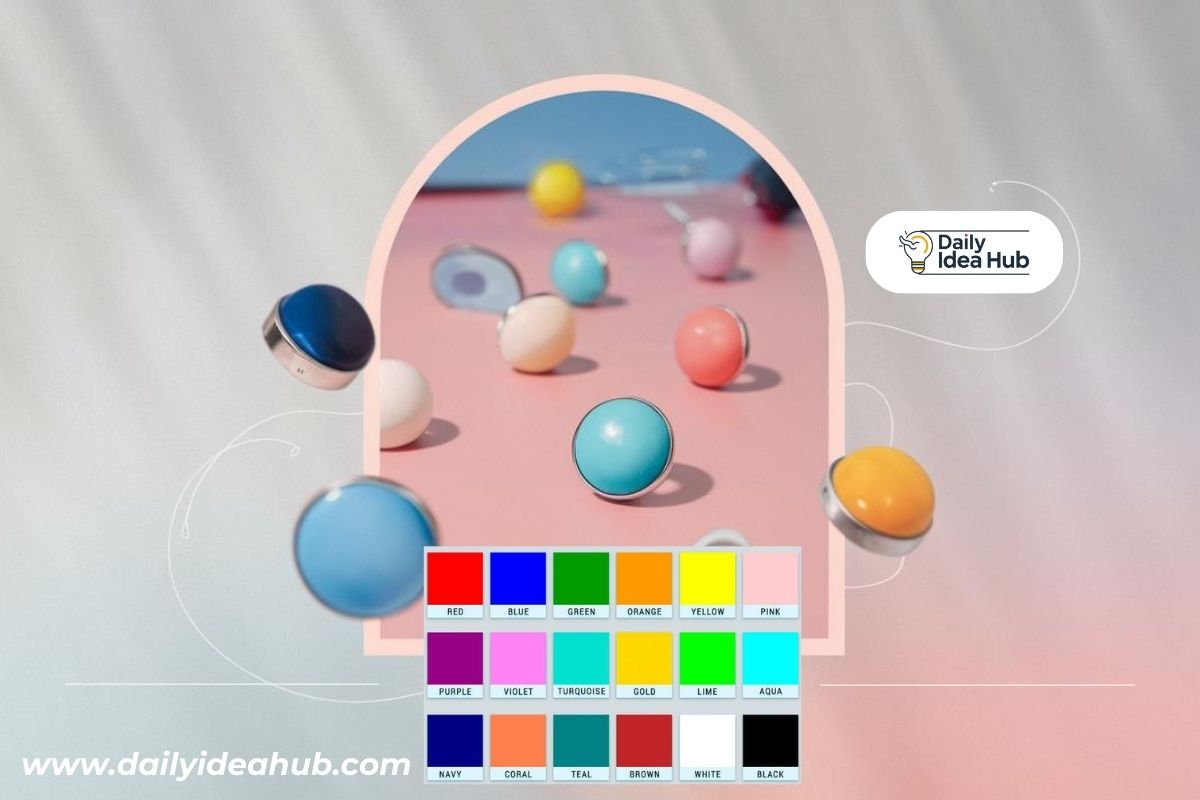
Mood rings have always been captivating accessories that have piqued the interest and sparked the imagination of individuals for many years. These one-of-a-kind accessories have gained a reputation for their remarkable color-changing feature, which is said to mirror the wearer’s emotions. However, I am curious about the functioning of mood rings and the significance behind the various colors they display. Within this extensive guide, we will explore all the essential aspects of mood rings, including their historical background, functionality, and the significance associated with each color of a mood ring.
Table of Contents
Introduction to Mood Rings
Mood rings are fascinating accessories that possess a remarkable quality: they have the ability to alter their color in response to the wearer’s emotional state. The concept behind mood rings is straightforward yet fascinating—they aim to mirror your internal emotions by transitioning through different colors. Regardless of your emotional state—be it joy, sorrow, anxiety, or tranquility—a mood ring is said to reflect a hue that symbolizes your present emotions.
History of Mood Rings
Mood rings made their debut in the 1970s thanks to the innovative minds of Josh Reynolds and Maris Ambats, both hailing from New York. These rings quickly gained popularity, capturing the essence of the 1970s era. It was a time of self-discovery, where individuals delved into their emotions and the relationship between their mind and body. Despite the ebb and flow of trends, mood rings continue to captivate individuals of every generation as a cherished and whimsical trinket. You can learn more about Mood Ring history from here.
How Mood Rings Work
Mood rings work because they have thermochromic liquid crystals built into the stone or band of the ring. When the temperature of these crystals changes, their molecular structure changes. This changes how light is received and reflected. So, the ring’s color changes based on the person wearing it’s body temperature, which is affected by how they’re feeling.
Think about how your body gets hot when you’re happy or calm. This makes the ring turn a cool blue or green color. When you’re worried or stressed, on the other hand, your body temperature may drop a little, which could cause the ring to change to darker colors like brown or black.
Common Mood Ring Colors and Their Meanings
Mood rings can display a wide range of colors, each of which is believed to correspond to a different emotional state. Here’s a breakdown of some common mood ring colors and what they typically represent:
Blue
Blue is one of the most common colors seen on mood rings and is often associated with calmness, relaxation, and happiness. When your ring turns blue, it likely means you’re feeling peaceful and content.
Green
Green is another color that frequently appears on mood rings. It usually represents a state of balance, harmony, and well-being. A green mood ring suggests that you’re feeling stable and centered.
Yellow
Yellow on a mood ring can indicate mixed emotions or slight nervousness. It’s a color that often appears when you’re feeling curious or mentally active but not particularly stressed.
Brown
Brown is typically associated with feelings of restlessness or uncertainty. When your mood ring turns brown, it might suggest that you’re feeling uneasy or a bit stressed.
Black
Black is often seen as a sign of stress or negative emotions. If your mood ring turns black, it could indicate that you’re feeling anxious, nervous, or overwhelmed.
Purple
Purple is a color that symbolizes creativity, imagination, and passion. When your mood ring turns purple, it may mean you’re feeling inspired or engaged in creative activities.
Red
Red is a color associated with strong emotions, including passion, love, and anger. If your mood ring turns red, it could be reflecting an intense emotional state.
Orange
Orange is a color that represents excitement, enthusiasm, and energy. When your mood ring turns orange, it might suggest that you’re feeling optimistic and ready for new experiences.
Mood Ring Color Chart
To make it easier to understand the meanings behind mood ring colors, here’s a simple color chart:
| Color | Emotion |
|---|---|
| Blue | Calmness, Relaxation, Happiness |
| Green | Balance, Harmony, Well-being |
| Yellow | Curiosity, Mental Activity |
| Brown | Restlessness, Uncertainty |
| Black | Stress, Negative Emotions |
| Purple | Creativity, Imagination, Passion |
| Red | Passion, Love, Anger |
| Orange | Excitement, Enthusiasm, Energy |
Are Mood Rings Accurate?
Many people often wonder about the accuracy of mood rings. It’s important to note that mood rings can indicate variations in body temperature, but they are not scientifically reliable for determining your precise emotional state. The color changes are a result of physical reactions rather than being directly tied to specific emotions. Take into consideration various factors such as the weather, room temperature, or your diet, as they can all have an impact on the color of the ring.
However, mood rings can still provide entertainment and give you a general idea of your emotions. They have the ability to provide a fun and interactive experience that can evoke emotions and spark conversations.
Caring for Your Mood Ring
Proper care is essential to ensure the longevity of mood rings, just like any other piece of jewelry. Here are some helpful suggestions to ensure your mood ring remains in excellent condition:
Water Avoidance: It is advisable to keep mood rings as dry as possible. Exposure to water can potentially harm the liquid crystals within the ring, leading to a loss of its color-changing ability.
Keep Away from Chemichals: Avoid using harsh chemicals such as cleaning products and perfumes, as they can harm the surface of the ring and impact its color-changing ability.
Proper Storage: When not in use, it is recommended to keep your mood ring in a cool and dry location. Take care to avoid subjecting it to extreme temperatures, as this may have an impact on the thermochromic crystals.
Popular Uses of Mood Rings
Mood rings are more than just a fashion statement—they have a variety of uses that go beyond their original purpose. Here are some popular ways people use mood rings:
- Fashion Accessory: Mood rings are a fun and stylish accessory that can add a pop of color to any outfit.
- Emotional Awareness: Some people use mood rings as a tool for self-reflection, helping them become more aware of their emotions.
- Gifts: Mood rings make unique and thoughtful gifts, especially for those who enjoy novelty items or have an interest in emotions and psychology.
- Conversation Starter: The changing colors of a mood ring can be a great conversation starter, whether you’re meeting someone new or catching up with friends.
FAQs about Mood Rings
Q: What is the lifespan of mood rings?
The durability of a mood ring is determined by the level of care it receives. If you take good care of your mood ring, it can last for several years. However, be cautious as exposing it to water or extreme temperatures can reduce its lifespan.
Q: Do mood rings have the ability to detect illness?
No, mood rings are not intended to detect illness. They only react to fluctuations in body temperature, which can be influenced by various factors, not solely related to health.
Q: Is it safe to wear mood rings?
Yes, mood rings are typically considered safe to wear. Nevertheless, for individuals with sensitive skin, it is advisable to select a mood ring crafted from hypoallergenic materials to prevent any possible irritation.
Q: Are the colors displayed by all mood rings identical?
Most mood rings display similar colors, but the specific shades and their interpretations may differ depending on the maker. It’s advisable to consult the color chart that accompanies your ring for accurate reference.
Q: Is it safe to wear a mood ring on a daily basis?
Yes, feel free to wear your mood ring on a daily basis. Just remember to be cautious about exposing it to water or chemicals, as they may cause damage to the ring.
Conclusion
Mood rings are an intriguing combination of style and psychology, providing individuals with a distinct means of connecting with their emotions. Although they may not be scientifically accurate, they can still be an enjoyable and thought-provoking tool that can bring a touch of wonder to your everyday existence. Whether you’re wearing a mood ring for style, as a present, or to delve into your emotions, these rings that change color are still enchanting individuals of every generation. By gaining insight into the significance of mood ring colors and their functioning, one can truly appreciate the allure and enigma of this enduring accessory.

